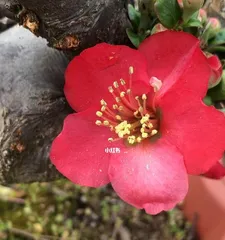Abstract:
The old crabapple plant is a traditional ornamental plant with rich cultural heritage and beautiful flowers, making it an indispensable part of gardens. However, to ensure that the old crabapple plant remains vibrant and beautiful, certain care techniques must be mastered. This article will detail for you how to properly...
The old crabapple plant is a traditional ornamental plant with rich cultural heritage and beautiful flowers, making it an indispensable part of gardens. However, to ensure that the old crabapple plant remains vibrant and beautiful, certain care techniques must be mastered. This article will detail for you how to properly care for old crabapple plants so that they become the brightest pearl in your garden.

Understanding Old Crabapple Plants
The old crabapple plant, also known as "糊梨树" (糊梨 tree), belongs to the Rosaceae family and Malus genus, and is a deciduous shrub. Its trunk is thick, with gray or light yellow bark that has many wrinkles on its surface, giving it an ancient and weathered appearance.
Selecting Appropriate Soil
Old crabapple plants prefer to grow in fertile, loose, and well-draining soil. It's best to use peat moss or leaf mold mixed with garden soil for planting, which can ensure good aeration and water permeability for the roots while providing sufficient nutrients.

Ensuring Adequate Watering
Old crabapple plants have high water requirements, especially during their growth period. In the absence of rain, water 2-3 times per week, but be careful not to overwater as this may cause root rot.
Fertilizing Properly
The old crabapple plant is a fertilizer-loving plant, but excessive fertilization can lead to stunted growth and smaller flowers. It's best to apply organic fertilizer once in spring and autumn respectively to ensure normal plant growth.
Pruning Appropriately
During the growing season, old crabapple plants produce numerous new branches that require proper trimming. Generally, when buds begin to sprout in spring, prune the branches to 2-3 bud positions, which can promote flower opening and healthy plant growth.

Pest and Disease Control
Old crabapple plants are susceptible to pests such as aphids and diseases like powdery mildew, requiring regular application of insecticides and fungicides to prevent damage to the plants.
Avoiding Excessive Sunlight and Cold
Old crabapple plants thrive in semi-shaded environments and should be protected from direct strong sunlight and excessively cold temperatures. During hot summer months, use sunshades or other protective measures to shield them.
Maintaining Proper Plant Spacing
As old crabapple plants gradually expand during growth, attention should be paid to spacing between plants. It's best to plant them in relatively independent locations to allow them to fully spread out.
Controlling Humidity
Old crabapple plants require appropriate humidity for growth, but excessive humidity can lead to root rot and leaf yellowing. In dry seasons, use humidifiers or sprayers to maintain proper humidity levels.
Preventing Root Damage
The roots of old crabapple plants are quite delicate and easily damaged. When transplanting or moving the plants, special care must be taken to avoid root injury, which could affect plant growth.
Ensuring Good Ventilation
Old crabapple plants need adequate air circulation to promote growth and prevent bacterial and fungal growth. It's best to plant them in well-ventilated areas and regularly clear fallen leaves and weeds.
Maintaining Acidic Soil
Old crabapple plants prefer acidic soil, with optimal pH levels between 5.5-6.5. Before planting, add appropriate amounts of peat or leaf mold to adjust soil acidity.
Water Quality Considerations
Old crabapple plants are sensitive to water quality. It's best to use filtered or boiled water for irrigation, avoiding tap water containing chlorine or excessive minerals.
Seasonal Considerations
Old crabapple plants require different care measures in different seasons. Fertilize in spring and autumn, provide shade and moisture in summer, and protect from cold in winter.
As a traditional ornamental plant, caring for old crabapple plants requires patience and meticulous attention. Only by mastering proper care techniques can we help them regain their youth and bloom beautifully in our gardens.